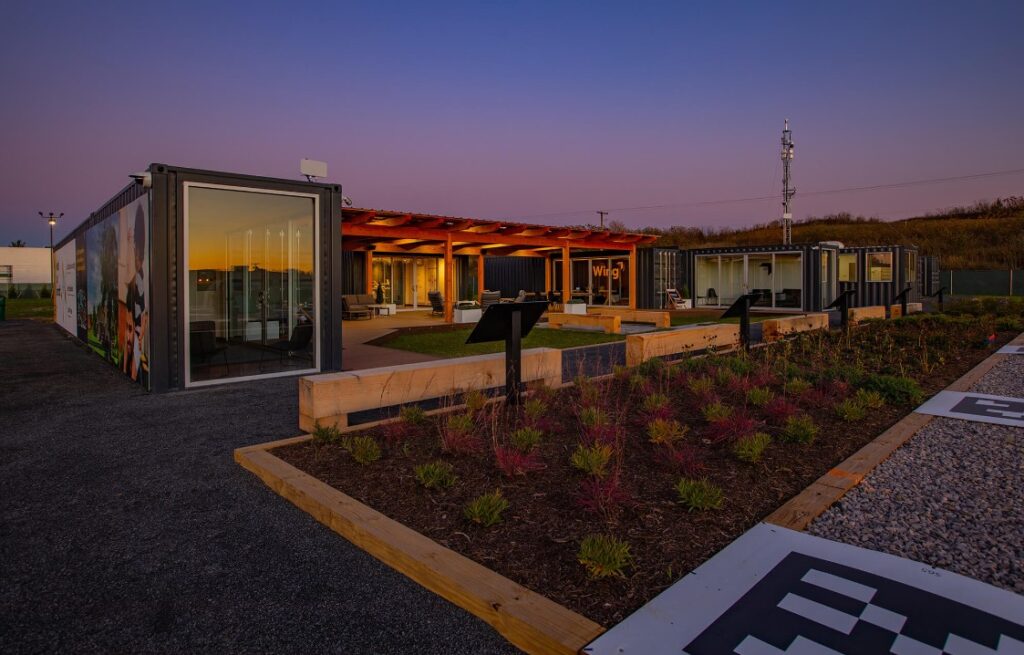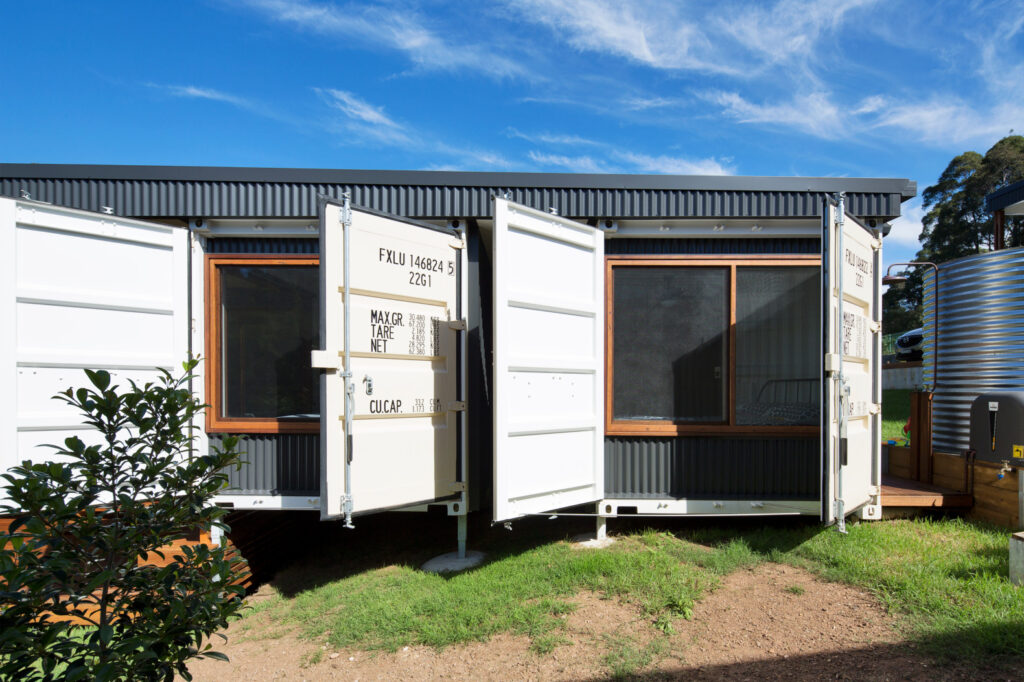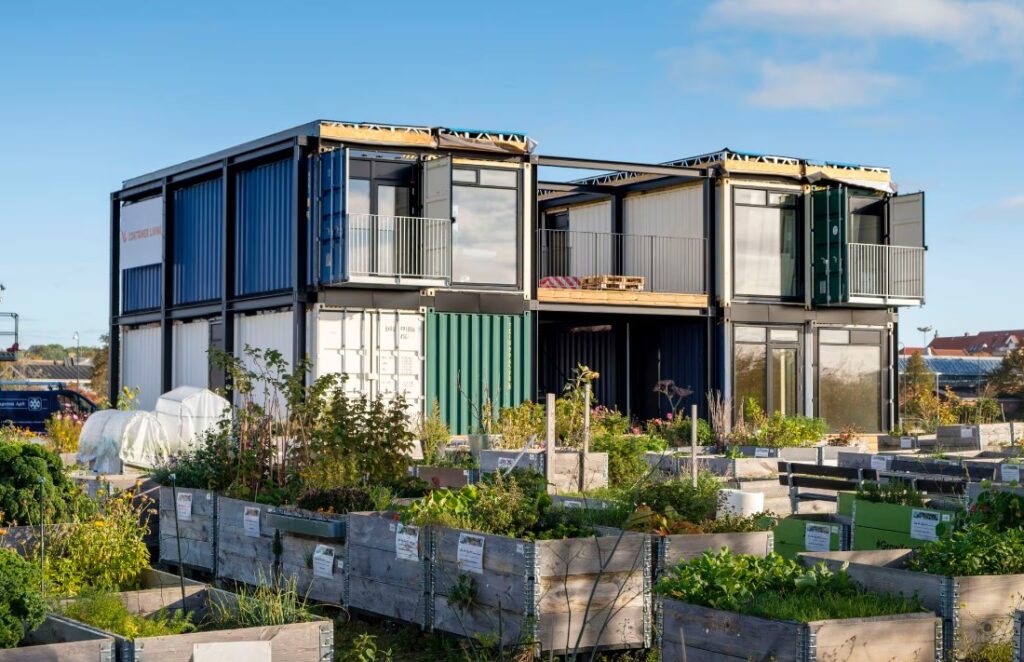Turning shipping containers into flexible homes or offices is a clever and responsible way to use resources, especially in the changing world of eco-friendly building and construction. It shows creativity and a shared duty to take care of the environment, as these recycled containers add a unique look to cities and countryside areas and tell an important story about taking care of nature and being resourceful.
The benefits of changing shipping containers go beyond looks; it helps reduce waste, saves energy, allows for flexible designs, and encourages eco-friendly living. So, it is no surprise that the global shipping container modification market size is continuously growing. According to a Straits Research report, the global market for modifying shipping containers was valued at USD 78,852 million in 2021. It is expected to grow at a compound annual growth rate (CAGR) of 6.9%, reaching USD 134,473 million by the end of the forecast period.
If you’re on the fence about exploring the shipping container modification market, consider the following environmental benefits to make an informed decision.
Upcycling and Waste Reduction
Shipping container conversion begins with the philosophy of upcycling. We can divert these sturdy structures from landfills by repurposing decommissioned shipping containers into habitable spaces, significantly mitigating their contribution to the global waste problem.
This approach aligns with the ethos of the circular economy. It reduces the demand for new construction materials, thereby minimizing the extraction of raw resources and the energy-intensive manufacturing processes associated with traditional building materials.
Adaptability and Sustainable Design

Source: bmarkostructures.com
The modular nature of shipping containers facilitates versatile and sustainable design options. Explore container options from a reputable online marketplace like Boxhub and choose your ideal condition and size. They will deliver the container within five business days, allowing you to start the design process quickly.
Containers can be stacked, arranged, and modified to create innovative living and working spaces. This adaptability minimizes the need for additional construction materials and reduces waste, contributing to a more sustainable and eco-friendly construction industry. The flexibility in design also allows for creativity in architectural solutions, promoting a culture of sustainable innovation.
Energy Efficiency in Construction
Traditional construction methods involve substantial energy consumption, from material production to on-site construction activities. Shipping container conversion mitigates these energy demands.
Since containers are initially designed for durability and longevity, converting them into habitable spaces requires fewer raw materials and less energy compared to conventional construction. This results in a lower carbon footprint for the construction process, supporting the imperative shift towards more sustainable building practices.
Minimal Site Disturbance
Unlike traditional construction projects that often disrupt ecosystems and necessitate extensive land clearing, shipping container conversions offer a minimal site disturbance approach. The ability to stack containers vertically or horizontally allows for the creation of multi-story structures without the need for extensive excavation or alteration of the landscape.
This eco-friendly approach preserves the natural environment and its biodiversity, harmonizing human structures with the surrounding ecosystems.
Longevity and Durability

Source: alconet-containers.com
Shipping containers are inherently built to withstand the rigors of international shipping, making them exceptionally durable structures. Unlike traditional building materials that may degrade over time, shipping containers offer longevity and resilience against various environmental factors, including corrosion, pests, and extreme weather conditions.
By repurposing these robust containers into habitable spaces, we extend their service life and reduce the need for frequent replacements, thus minimizing the environmental impact of ongoing maintenance and renovations. This durability contributes to the sustainability of shipping container conversions and gives occupants a sense of security and stability in their living or working environments.
Reduced Transportation Impact
Shipping containers are inherently designed for transportation efficiency. Repurposing these containers into living or working spaces leverages their existing transportation infrastructure, reducing the need for additional transportation of construction materials to the site.
This minimizes the associated carbon footprint and lowers the construction project’s overall environmental impact, aligning with sustainability principles.
Energy-Efficient Living Spaces
Beyond the construction phase, shipping container homes can be modified to include energy-efficient features. These may consist of high-quality insulation, solar panels, and energy-efficient windows.
Such modifications reduce energy consumption for heating, cooling, and lighting, making container homes more environmentally friendly than traditional dwellings. Inhabitants can enjoy a unique living space, lower utility bills, and a reduced ecological impact.
Water Conservation

Source: inhabitat.com
The adaptability of shipping containers extends to water conservation practices. Container homes can have rainwater harvesting systems, greywater recycling, and other sustainable water management solutions. These features promote water conservation and reduce the strain on local water supplies, aligning to create environmentally responsible living spaces.
The integration of water-efficient technologies further enhances the sustainability profile of shipping container conversions.
Carbon Sequestration Potential
Beyond its primary function as a living or working space, a converted shipping container can play a role in carbon sequestration. In other words, this procedure involves capturing and preserving carbon dioxide from the atmosphere.
Incorporating green roofing or vertical gardening on the container’s exterior enhances aesthetic appeal and contributes to the absorption of carbon dioxide. Plants, through photosynthesis, absorb CO2 and release oxygen, effectively acting as a natural carbon sink.
Integrating such green features into shipping container conversions adds an extra layer of environmental benefit, helping mitigate the impacts of climate change by sequestering carbon and fostering urban green spaces.
Promotion of Sustainable Lifestyles
Beyond the physical structures themselves, shipping container conversions often encourage a more sustainable way of life. The efficient use of space necessitates a mindful approach to consumption, promoting downsizing and minimalism.
This shift in lifestyle reduces individual environmental footprints while fostering a broader cultural change towards sustainability. As individuals embrace the unique challenges and opportunities of container living, they contribute to a more conscientious and eco-friendly society.

Source: english.elpais.com
Conclusion
In pursuing sustainable construction practices, shipping container conversion emerges as a promising and environmentally responsible alternative. As we navigate the challenges of the 21st century, shipping container conversion is a testament to the power of innovation and conscious design in shaping a more sustainable future.
By carefully considering the impact on the environment, society, and the economy, converting shipping containers represents an innovative approach to sustainable living and construction practices.



















